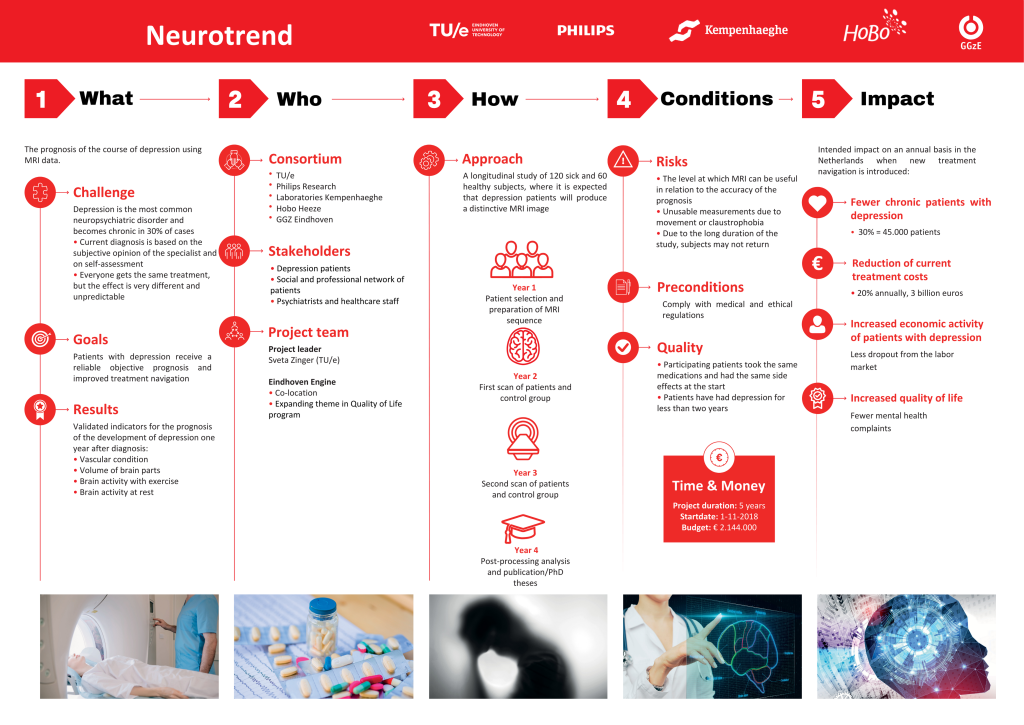Using technology to tackle low literacy
Hi, I’m Jessica Goss and, as a visual designer, I have always dedicated my efforts, creativity and abilities to developing something meaningful for people, using my knowledge to make people’s lives better. With that in mind, after I finished my master’s degree, I developed a mobile game with the COVID-19 pandemic as the background.
The experience of creating a mobile game that had such success in my home country of Brazil made me think that maybe this could be the right path for me: finding a way to put together my skills and my desire to change people’s lives through design. That was one of the reasons that led me to apply for an EngD position at TU/e to work in the Emergence Lab at Eindhoven Engine on Low Literacy and the Future of Work projects.
Focus within low literacy
Nowadays, almost 2.5 million people are low literate just in the Netherlands and this number is increasing over time. It is known that there are different types of literacy, but we are focusing on reading and writing abilities since these are the main forms of communication and access to knowledge in contemporary society. On top of that, there is a shortage of teachers for all these people, so we should use technology such as Artificial Intelligence, digital games and social media to tackle this problem. However, low literacy, as you might imagine, is a complex problem. Choosing a traditional way of designing is not the right decision.
I have always dedicated my efforts, creativity and abilities to developing something meaningful for people, using my knowledge to make people’s lives better.
Using design thinking
Up to this moment, I have been studying in order to better understand this issue, following design thinking steps as an approach. At the same time, I am learning how to develop a way of thinking that is systemic and takes into account the complexity of this wicked problem. I am being supported by an excellent team of teachers and I believe that the EngD program is helping me to have access to the latest research in AI interaction and user experience, guiding me to become a more human and complete designer. Regarding the language (you might be asking yourself), since I don’t speak Dutch (yet), I am following interviews by Dutch students with the target group to get information on how we can develop a solution that really will help them.

Finally, my next steps will be developing a prototype to be tested with the target group until the end of the year and then making the necessary changes to adapt to their needs. Also, I wish to extend this project to my home country and – why not? – more countries.
Neurological MRI-based biomarkers for treatment navigation in depression
My name is Jesper Pilmeyer (28 years old) and I am a PhD candidate in the Signal Processing Systems group at the Department of Electrical Engineering (Biomedical Diagnostics research group). I finished my bachelor’s and master’s in Medical Engineering at TU/e at the Department of Biomedical Engineering. I graduated with a specialization in medical image analysis.
In 2019, I started my PhD, after which we initiated a clinical study called Neurotrend in collaboration with Philips and the epilepsy centre Kempenhaeghe. Neurotrend is one of the first Eindhoven Engine OpenCall projects.
Predicting the clinical outcome
This study is aimed at predicting the clinical outcome (i.e., the course/development of a disease) of people with depression based on MRI scans. More specifically, we obtain structural, functional (activity) and vascular MRI scans of the brain of subjects with and without depression at the beginning of the study and after a year. During the one-year period, we monitor their depression symptoms and cognitive ability. In this way, we can predict how the depression will develop over time based on the first scans but also evaluate brain changes over a year and correlate this to symptom changes. The clinical study was ethically approved in 2021 and its data acquisition is almost finished at the time of writing.

Preliminary results
From the preliminary results, we can conclude that brain activity patterns and interaction between brain networks is time-varying and that including this neurodynamic nature in a model improves the prediction of depression symptom severity changes over time compared to more standard/static approaches (brain activity/synchronicity over the whole functional MRI scan). Moreover, we demonstrate that a relatively novel MRI acquisition method, called multi-echo multiband imaging, increases the functional MRI signal quality and improves, amongst other things, the temporal resolution. This is beneficial as it allows us to more reliably model network interactions. Another interesting finding was the fact that brain volume and tissue properties of several limbic structures, which are known to be involved in emotion processing, also have predictive value for clinical outcome in depression. A smaller amygdala (associated with fear processing) volume correlated significantly with a higher number of lifetime depressive episodes.

Improving the models and interpreting clinical meaning
In the last period of the PhD, I will focus on improving the models and interpreting the clinical meaning of these results, which will further help in understanding the aberrant brain mechanisms in subjects with depression. We hope to show other researchers the direction in which we think future MRI studies related to psychiatric disorders should head. Taking into account the complex, dynamically interactive brain while implementing the aforementioned MRI acquisitions could lead to more replicative results, especially if carried out in studies with a larger sample size. Even though we will not yet be able to apply these models in the clinic to support (still subjective) clinical decision-making, we are contributing significantly to existing depression-related MRI research. We have demonstrated the potential of state-of-the-art analyses and acquisitions in combination with a multi-modal MRI-based longitudinal study for depression diagnosis/prognosis purposes.






